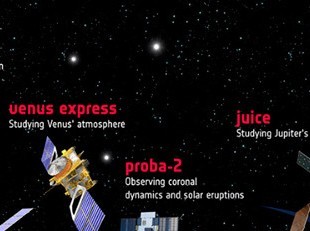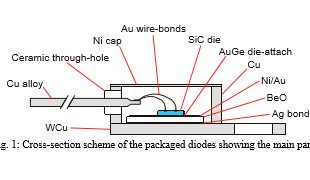For decades, military/space electrical, electronic, and electromechanical (EEE) parts have proved to be suitable for use in military and space applications. [NASA's Office of Safety & Mission Assurance (OSMA) evaluates newly available and advanced electronic parts for programs... Continue reading

Traditionally ASICs (and FPGAs) used in space were manufactured using Rad-Hard technologies and designed with special libraries. AS CMOS Technologies became denser (beyond the 180 nm node) it was realized that it was no longer affordable to change the semiconductor technology... Continue reading

Passive liquid crystal (LC) devices are becoming an interesting alternative for the manufacturing of photonic devices in spatial applications. These devices feature a number of advantages in this environment, the lack of movable parts, and of exposed electronics being among the... Continue reading

High brightness semiconductor lasers are potential transmitters for future space lidar systems. In the framework of the European Project BRITESPACE, we propose anHigh Brightness Semiconductor Lasers allsemiconductor laser source for an Integrated Path Differential Absorption... Continue reading

Spacecraft structural health-monitoring applications are pushed forward by increased constraints in the cost of launching payloads into orbit that dictates major reduction in structural weight only attained through the use of advanced materials and innovative manufacturing... Continue reading

A novel integrated optical source capable of emitting faint pulses with different polarization states and with different intensity levels at 100 MHz has been developed. The source relies on a single laser diode followed by four semiconductor amplifiers and thin film polarizers... Continue reading

In space applications, optocouplers may need to work at very low temperatures. Under this low temperature operating conditions, the device degradation subjected to radiation exposure may show different behaviour compared to a standard radiation test under room temperature. The... Continue reading

The efficient generation of photon pairs requires very strict characteristics on the illuminating beam, such e.g. its size, shape, and polarization state. For these photon pairs to be entangled in their polarizations there must be a superposition of two distinct pair-generation... Continue reading

This article describes the setup developments and some of the results obtained for the temperature characterization from -190ºC to more than +300ºC of passive components normally used for space missions, but with a standard operating temperature range in most of the cases. One... Continue reading

Fabrication technology and packaging strategy for 300V-5A Silicon Carbide Schottky diodes with a wide temperature operation range capability (between -170ºC and 300ºC). These diodes have been designed for harsh environment space applications such as inner Solar System... Continue reading

ASER diodes are increasingly used for space applications, either to pump solid state lasers, in photonic payloads, or as sources for LIDAR or spectrometric applications. In space applications reliability issues are a primary concern and among them, radiation hardness is one of... Continue reading

The use of photonic technologies for space applications has risen the problem related to the ability of optoelectronic and optic components to withstand space environment as all optoelectronic and optic components come from terrestrial applications. Therefore, the development of... Continue reading

